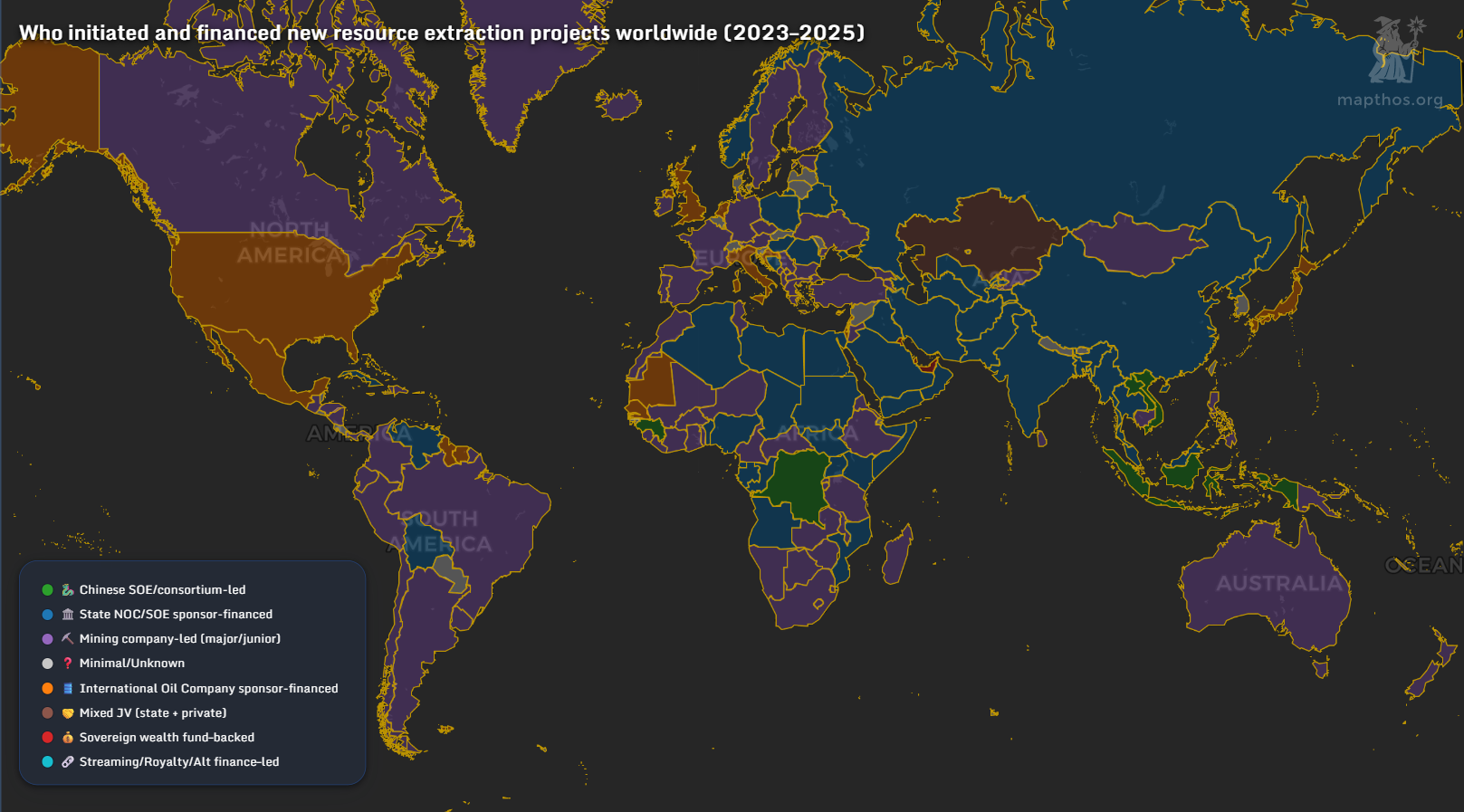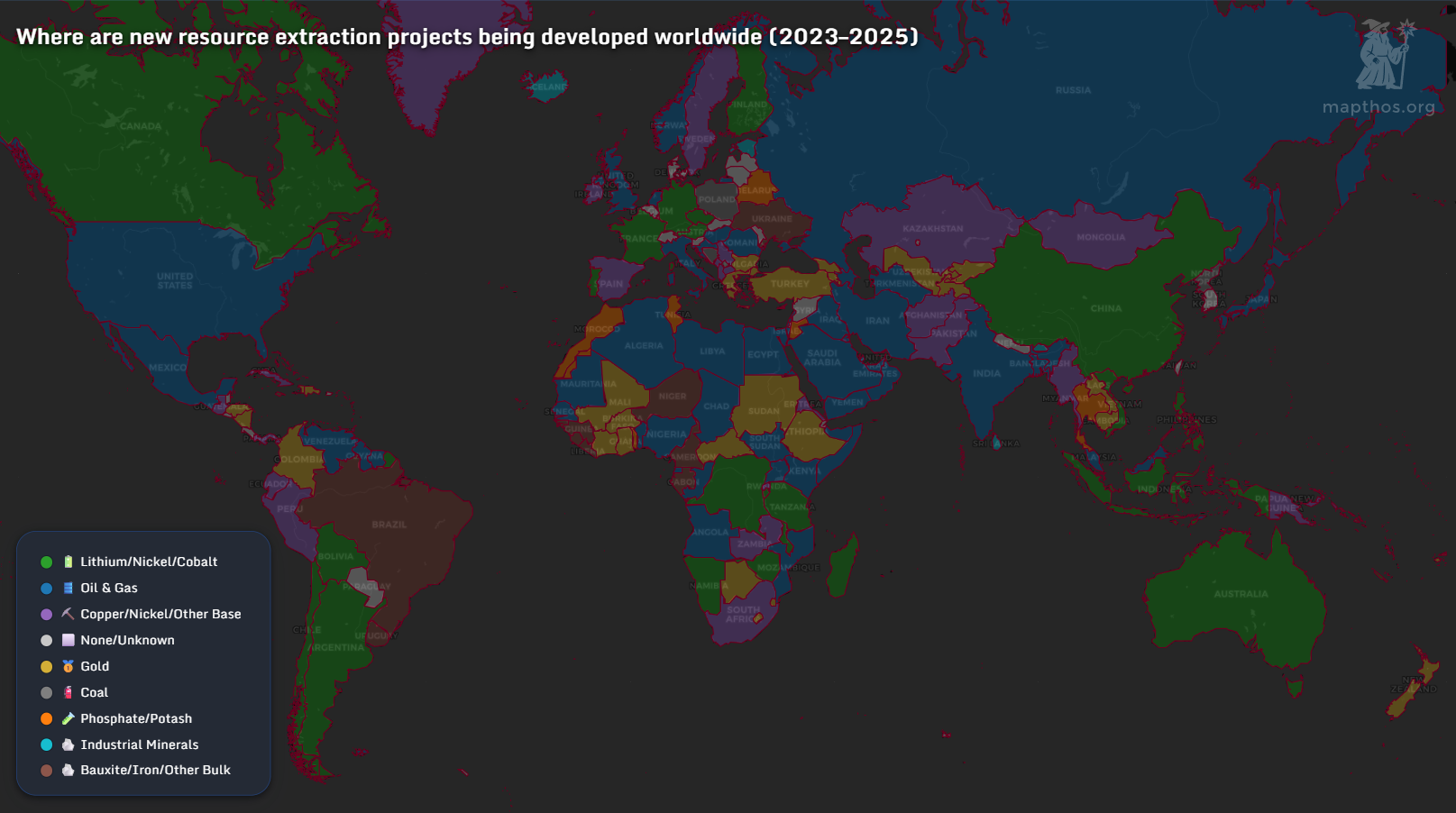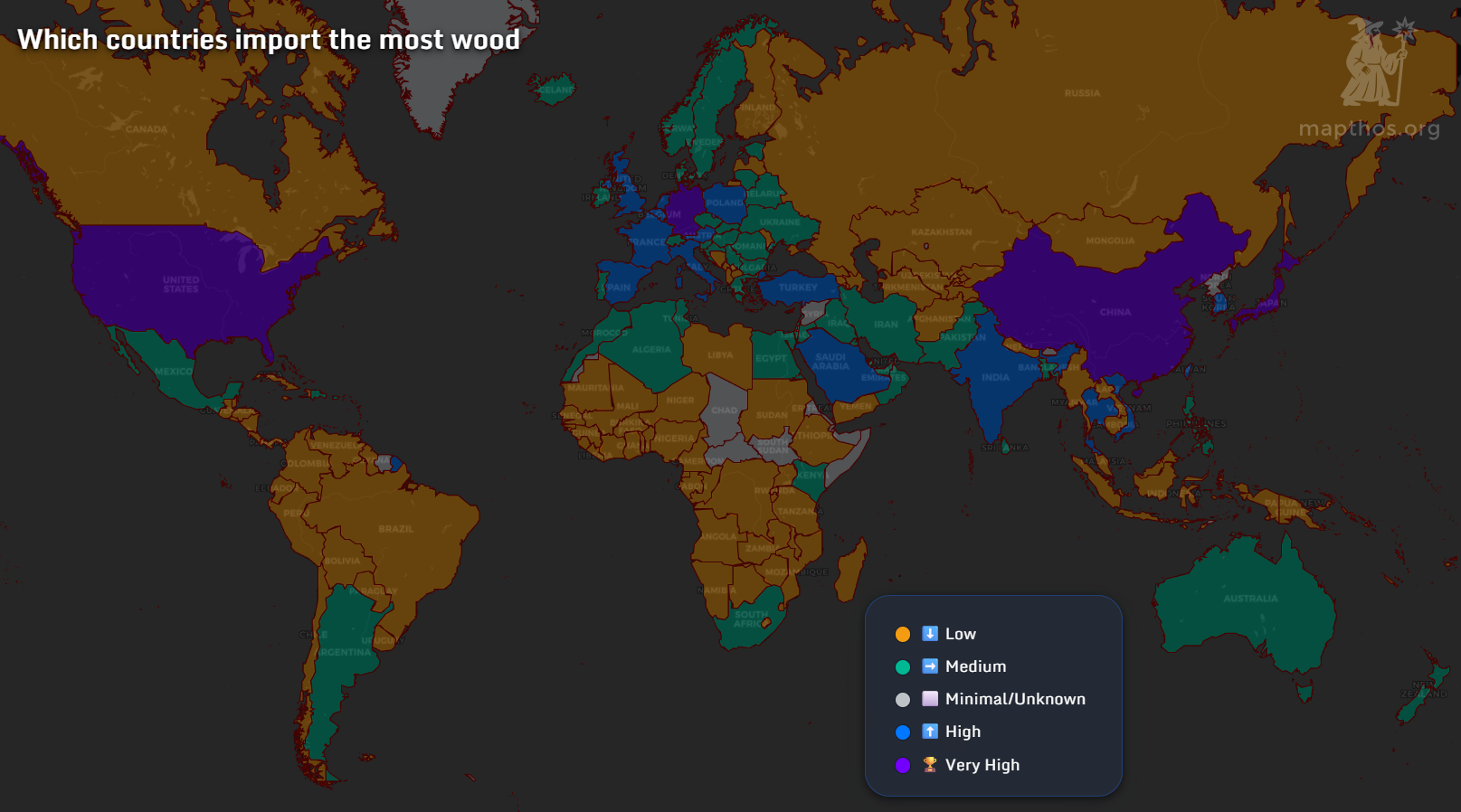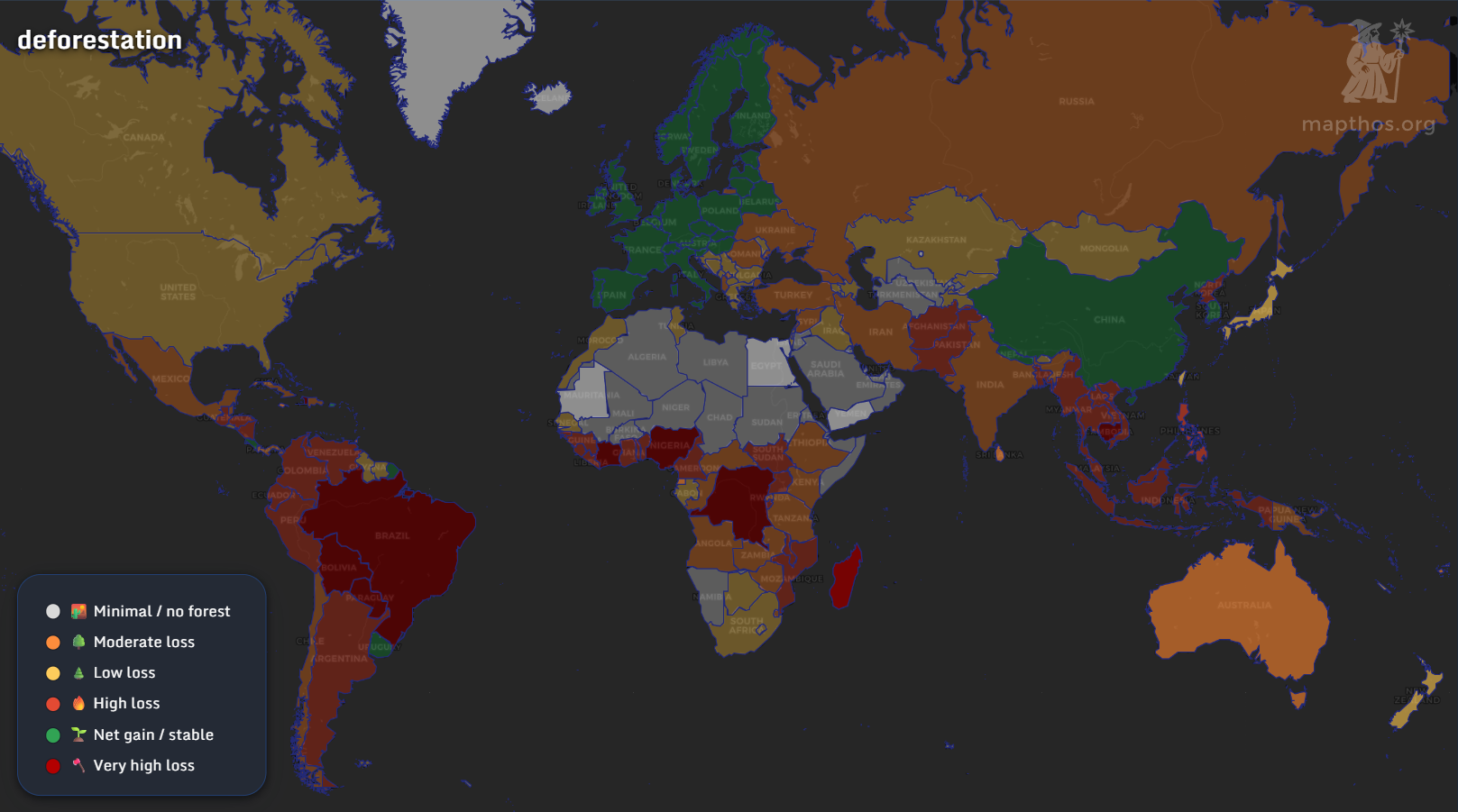🪓 The Extraction Paradox: Mapping Humanity’s Hunger for Resources (2023–2025)

Every civilization leaves a footprint — ours glows in neon. Between 2023 and 2025, humanity entered a new age of extraction: a feverish race for lithium, oil, wood, and land. What was once a story of progress is now a paradox — the same materials driving the green transition are also deepening the scars on Earth’s surface.
🌍 Who’s Financing the Global Extraction Boom

The first map tells a revealing story: who’s behind the world’s new resource frontiers.
- China’s state-owned enterprises (SOEs) dominate across Africa and Southeast Asia.
- Western consortiums and mining majors lead in Latin America and Australia.
- Sovereign wealth funds from the Gulf and Asia quietly bankroll projects from Kazakhstan to Mozambique.
⚙️ What We’re Digging For

From cobalt in the Congo to lithium in Chile, the material foundation of the energy transition is expanding fast.
- Lithium, nickel, and cobalt dominate in South America, China, and Australia.
- Oil and gas remain strong in the U.S., Middle East, and Russia — proving that fossil fuel decline is far from reality.
- Copper and other base metals surge in Africa and Central Asia, feeding the global wiring of electrification.
🪵 The Appetite for Wood

As the planet burns, the demand for wood still climbs. The United States, China, and Western Europe remain the top wood importers, driven by housing, packaging, and bioenergy demand. Meanwhile, developing nations — the ones cutting their forests — see little of that profit.
In this economy, forests flow one way: from poor to rich, from green to gray.
🌳 The Cost: Global Deforestation

This final layer completes the paradox. Deforestation hotspots now overlap almost perfectly with extraction frontiers — from Brazil’s Amazon to Congo’s basin and Southeast Asia’s archipelagos.
- Very high loss: Brazil, Indonesia, DRC, and Nigeria
- Stable or net gain: China, India, Northern Europe
- Minimal forest: North Africa and the Middle East
🔄 The Cycle of Extraction
The same forces that promise a cleaner future — electrification, growth, transition — are also driving an older instinct: to take more. Each mine, pipeline, or logging concession becomes another heartbeat in the global metabolism of consumption.
The paradox is not that we extract — it’s that we extract to sustain the illusion of progress.
🌱 A Planet at the Crossroads
The data doesn’t lie: the world’s resource geography is shifting, but the underlying system remains the same. To build a sustainable future, we must learn to see value not only in what we take — but in what we choose to leave untouched.
👉 Explore more at app.mapthos.org
See the world. Map better. Dream big. 🌍✨